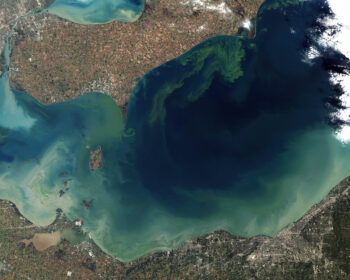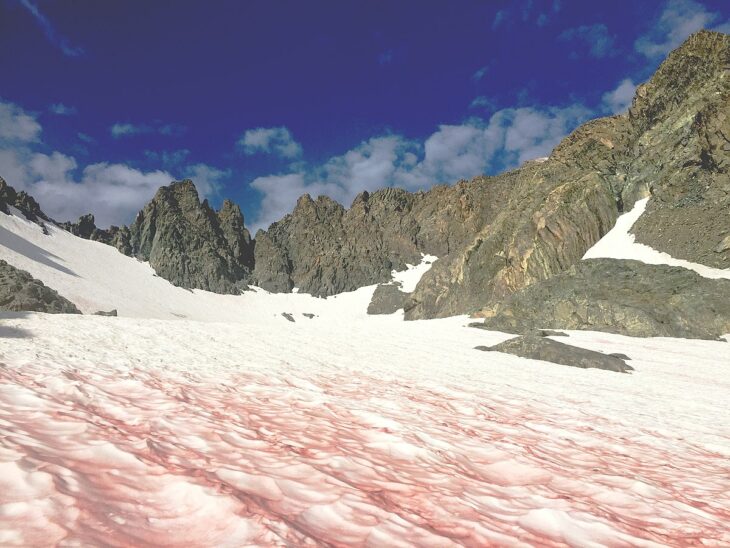In recent decades, astronomers have discovered more than 5000 planets orbiting stars beyond our solar system, with nearly 9000 more candidate planets. They observe these planets, called exoplanets, with large space telescopes like the JWST to see if they have conditions suitable for life.
When a planet passes in front of its star, some of the star’s light is blocked by the planet and its atmosphere. JWST can measure the wavelengths of light passing through the atmosphere. The resulting transit spectra provide clues to the atmosphere’s composition. This is how JWST recently found water in the atmosphere of an exoplanet for the first time.
Another type of spectral fingerprinting measures the wavelengths of light coming off a planet’s surface, called reflection spectra. Future NASA missions like the Large Ultraviolet Optical Infrared Surveyor (LUVOIR) will be able to measure reflection spectra from exoplanets. Reflection spectra could directly detect life on an exoplanet, since colorful organisms have molecules with unique reflection signatures, called pigments.
Biological pigments produce a rainbow of colors, from green algal blooms to pink “watermelon” snow. Orbiting satellites and space probes like Galileo can see these colors on Earth from space. This observation suggests color spectra could also help scientists identify microbes on an exoplanet.

Algal bloom in Lake Eerie, from NASA Earth Observatory.
Astrobiologists propose icy exoplanets could be good places to spot life, since colorful organisms dominate ice-covered regions like Antarctica. They created a spectral catalog of life as it would be seen on an exoplanet. But this catalog neglected to include any measurements of colorful pigments from microorganisms in icy environments.
To fill this gap, an international team of biologists and astronomers recently created a color reference database for life in ice to help identify biosignatures on the surface of icy exoplanets. The team isolated 80 microorganisms from ice and water in the Canadian subarctic. They examined yellow, orange, pink, green, and white microbes that included different types of bacteria, fungi, and algae.
The researchers grew the microbes in bottles for up to a week and deposited them in even layers on white filters. They analyzed each filtered sample twice – once while it was still wet, and once after it had dried. They also analyzed dry filters, wet filters, and colorless cell cultures as controls.
Because exoplanets are so far away, space telescopes can only measure a single snapshot of light integrated over the entirety of the planet. To replicate this situation in the laboratory, the team measured the microbes’ spectra with a special 360-degree system. The system shined light on the sample from all sides, and combined its reflected light into a single spectrum for each set of pigmented microbes.
The results confirmed the reflectance spectra of pigmented organisms were different from reflectance spectra of unpigmented organisms and controls. They also showed color most strongly influenced the signal, regardless of the type of organism. In particular, many different types of microbes had yellow, orange, and red pigments called carotenoids that produced distinct reflectance signatures.
Carotenoids are common in a wide variety of ice-dwellers, including algae, photosynthetic bacteria, and non-photosynthetic bacteria. These biomolecules help cells survive the extreme conditions common in icy environments, like freezing temperatures, high radiation, and lack of nutrients. The same extreme conditions exist on icy exoplanets, so the researchers reasoned the same carotenoids could be used by icy aliens, producing a strong biosignature.
The team also found dry samples had more vibrant colors and higher reflectance than wet ones. They suggested wet samples represent life on an Earth-like planet where liquid water is abundant, while dry samples more closely resemble frozen environments. This result further confirmed astronomers could find pigment biosignatures most easily on icy worlds.
Icy moons in our solar system, like Jupiter’s moon Europa and Saturn’s moon Enceladus, are also popular targets for life detection missions. One problem with remotely detecting pigment biosignatures on icy moons is that these biomolecules are destroyed by ultraviolet radiation. Most planets have atmospheres that can block harmful UV rays, but smaller bodies like icy moons don’t have protective atmospheres. To circumvent this problem, the team suggested astronomers could look for pigments in underground ice and ice emitted from geysers on icy moons.


